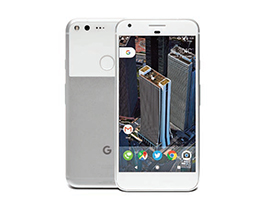 If you have used or are using Android OS, chances are you must have heard of the Nexus devices. The Nexus programme that started in 2010 allowed Google to focus on the software while its chosen partner focussed on the hardware of the phone. However, this year, Google is trying to notch up its promise on the ‘Google experience’ by bringing the phone’s design and software under one roof. The Pixel and the Pixel XL are the first two phones that are ‘Made by Google’ and while both are inherently similar in terms of design, both phones differ slightly in terms of screen size and resolution, which is 5 inches and Full HD in the Pixel compared to Pixel XL’s 5.5 inches and Quad HD resolution. The battery capacity also vary with 2770mAh and 3450mAh in the Pixel and Pixel XL respectively.
If you have used or are using Android OS, chances are you must have heard of the Nexus devices. The Nexus programme that started in 2010 allowed Google to focus on the software while its chosen partner focussed on the hardware of the phone. However, this year, Google is trying to notch up its promise on the ‘Google experience’ by bringing the phone’s design and software under one roof. The Pixel and the Pixel XL are the first two phones that are ‘Made by Google’ and while both are inherently similar in terms of design, both phones differ slightly in terms of screen size and resolution, which is 5 inches and Full HD in the Pixel compared to Pixel XL’s 5.5 inches and Quad HD resolution. The battery capacity also vary with 2770mAh and 3450mAh in the Pixel and Pixel XL respectively.
Design and Build Quality
Android phones these days generally go full metal or glass. But in case of the Pixel XL (and Pixel), it goes for both, at least at the back. The top portion of the phone dons the shiny glass whereas the body is all aluminium. The sides of the phone feature smooth curves, chamfered edges and is 8.5mm thick. In terms of colour choices, Google’s selling the Really Black and Very Silver colour options in the Indian market; having seen both colours in the flesh, we liked the black variant more than the silver one. However, all said and done, we found the overall design of the Pixel XL a bit underwhelming. While it may look like nitpicking, Google could have really worked to make the bezel thinner at the bottom end of the display, but the biggest omission we feel is the lack of water-resistant capability. When you are pricing the phone as much as a Samsung Galaxy S7 edge or Apple iPhone 7, there’s no excuse for leaving such a marketable feature out.
Key Features
The Pixel XL comes with a 5.5-inch AMOLED display that supports Quad HD resolution. AMOLED panel results in some deep blacks with colours seemingly on the cooler side. The display boasts a contrast ratio of 100,000:1 and features few enhancements like adaptive brightness; ambient display that wakes up the display when receiving notifications; and a night light that tints the screen red to reduce eye strain when using the phone in dark.
The Pixel XL packs Qualcomm’s latest Snapdragon 821 clocked at 2.15GHz + 1.6GHz octa-core processor along with 4GB of RAM. In terms of storage, the base variant comes with 32GB, whereas the other variant comes with a generous 128GB internal storage. Do note, there’s no support for storage expansion, which means if you have the means to spend a little more, go for the 128 gig version. The phone’s ingerprint sensor aka Pixel Imprint is located at the back of the phone.
Connectivity-wise, Pixel supports global LTE bands but interestingly, misses out VoLTE support out of the box. We suspect Google will enable it later as Pixel’s modem is clearly capable of supporting VoLTE. It also supports 802.11ac Wi-Fi, Bluetooth 4.2 and USB Type-C. Speaking of Type-C, Google also bundles a USB Type-C adapter that makes it easier and faster to copy data from the existing Android device or iPhone to the Pixel XL.
The Pixel duo are one of the first devices in the world to run the latest Android 7.1 Nougat OS. The phones come with Google Assistant which helps to search, manage tasks, find photos or even play music through voice commands.
The second exclusive feature for the Pixel range is unlimited storage for all videos and photos shot from the Pixel phones. Although Google offers unlimited storage for photos and videos uploaded from non-Pixel devices, anything shot from the Pixel will be backed up to Google Photos in full resolution.
On the camera front, both the Pixel and the Pixel XL come with a 12.3MP sensor with f/2.0 lens. Battery is another highlight of Pixel XL. The 3450mAh easily lasts over a day with mixed usage of internet, gaming, videos and some calls.
Ergonomics
The sides of the phone features smooth curves, chamfered edges and is 8.5mm thick, which gives the phone a good grip and excellent feel in the hands. Phone’s fingerprint sensor aka Pixel Imprint is located at the back of the phone. While the placement is ideal when you’re holding the phone, you’re forced to either pick the phone up or use the password or pattern to unlock the phone. While the phone unlock is fast and accurate, it’s the swiping the sensor gesture to show phone notifications that we particularly like. We hope Google expands on this functionality and adds relevant gestures that work as per different app requirements.

